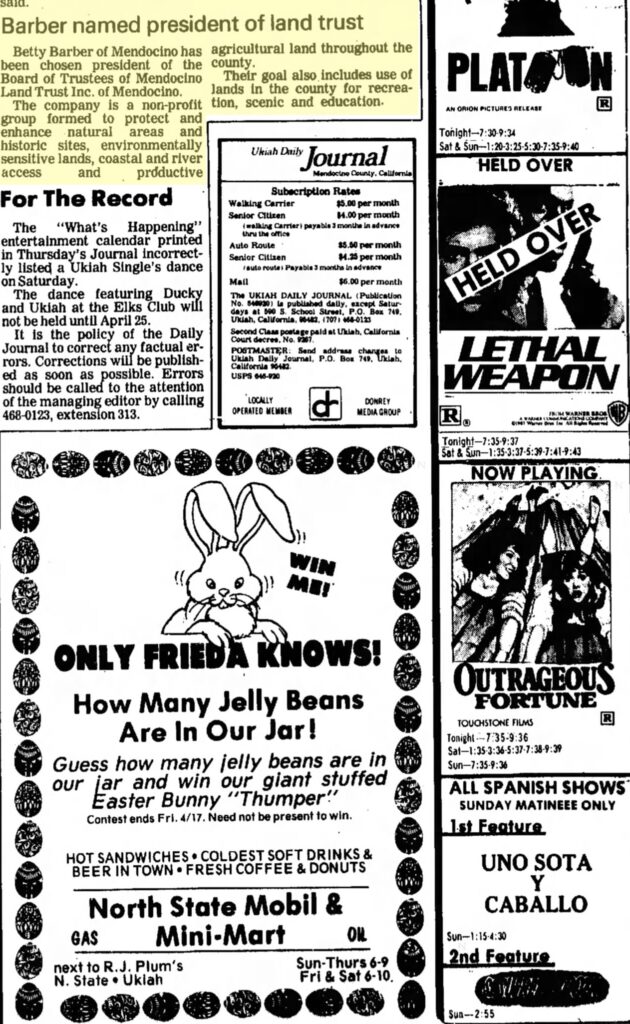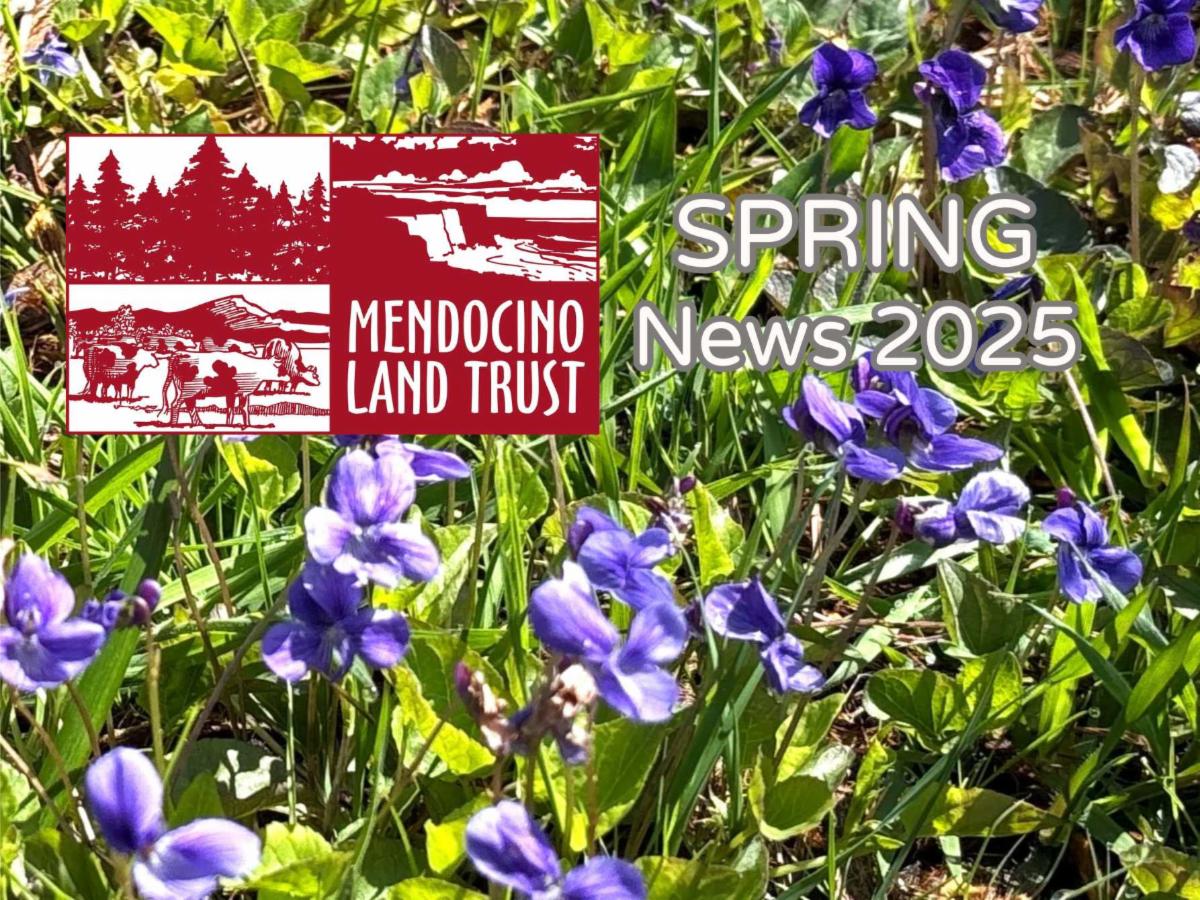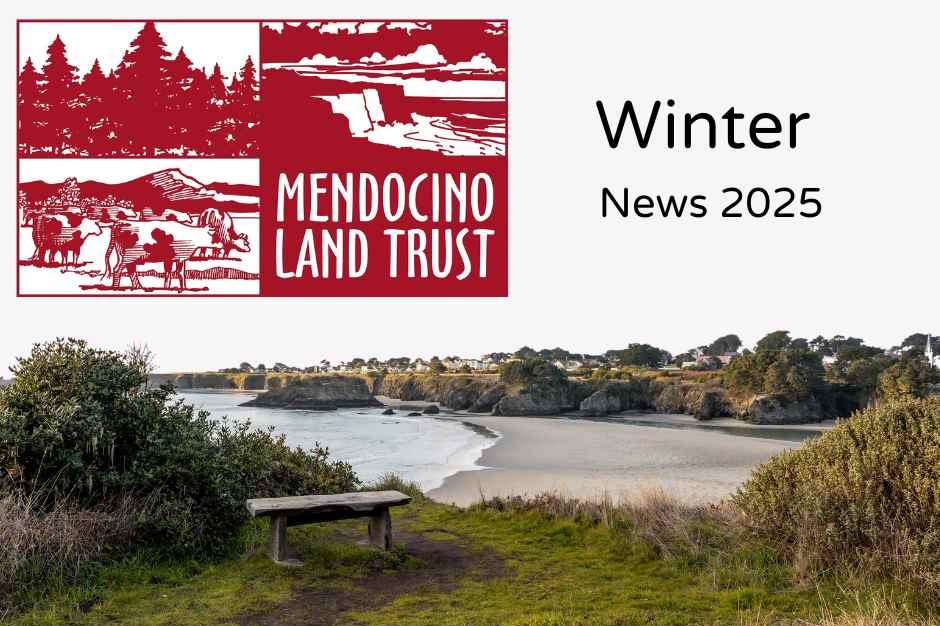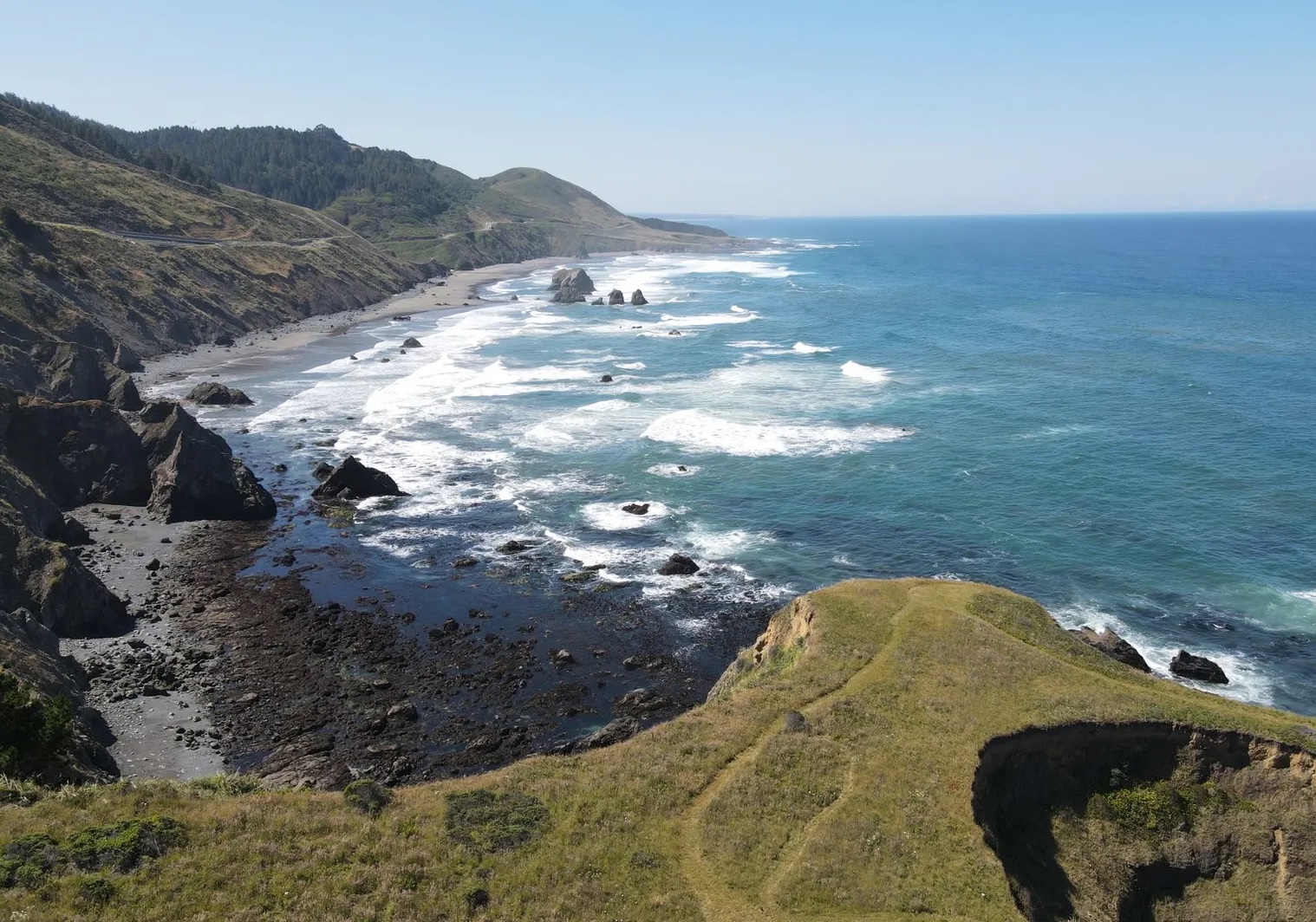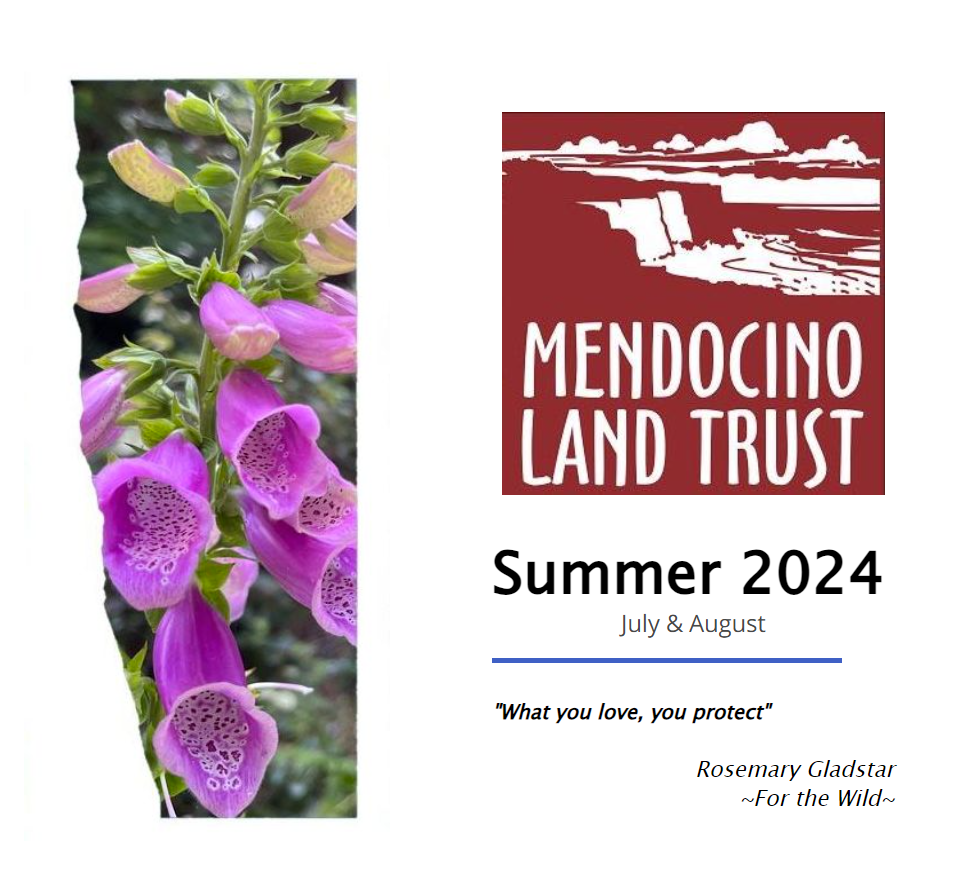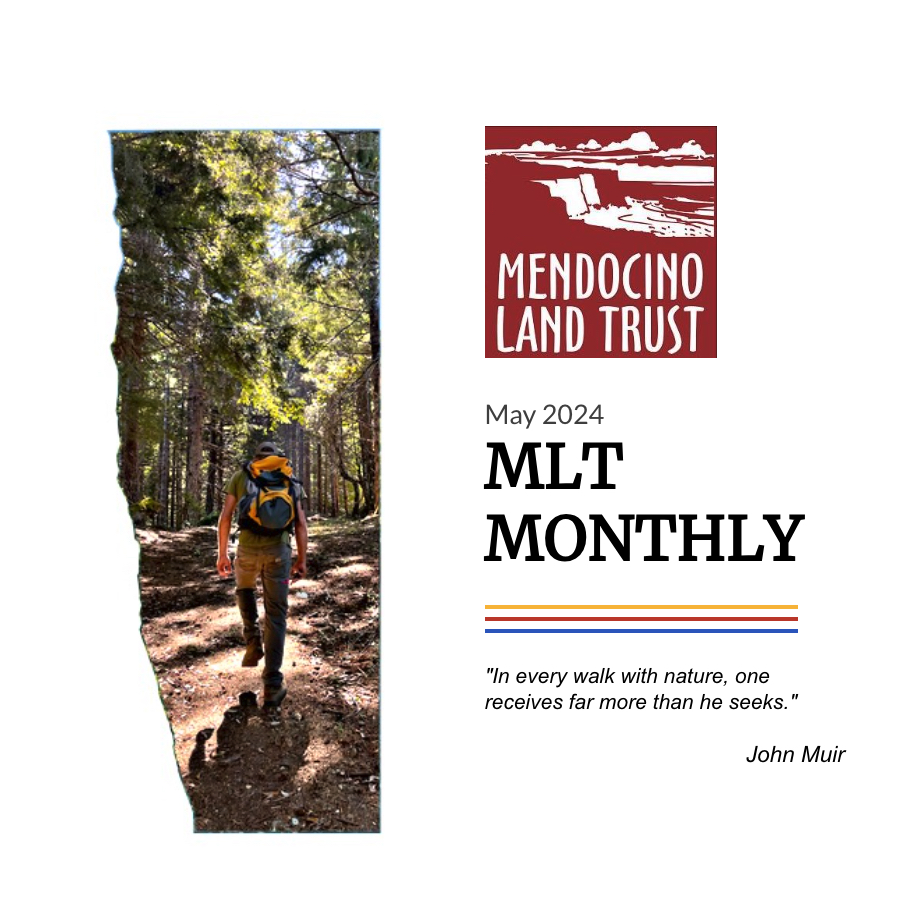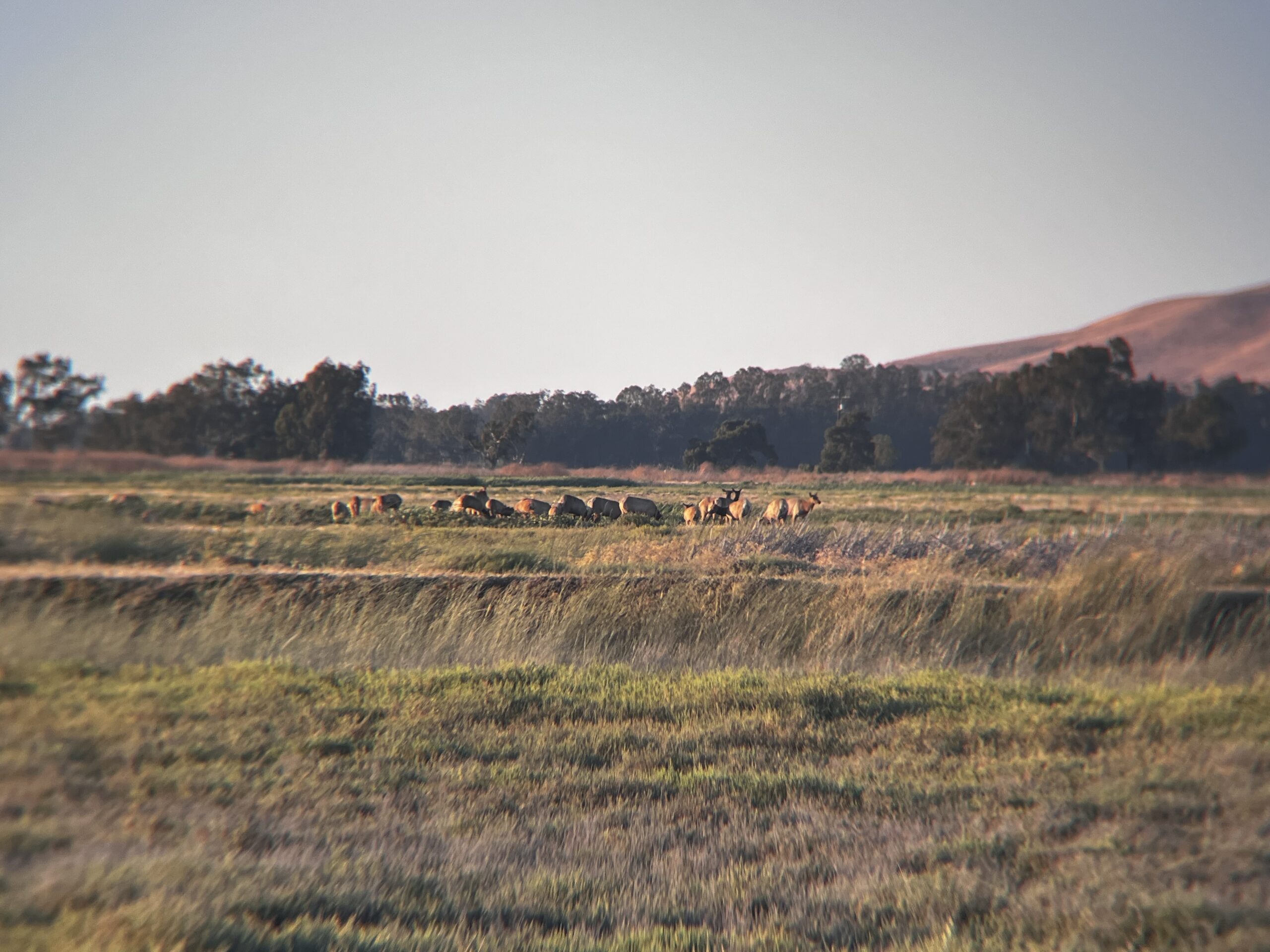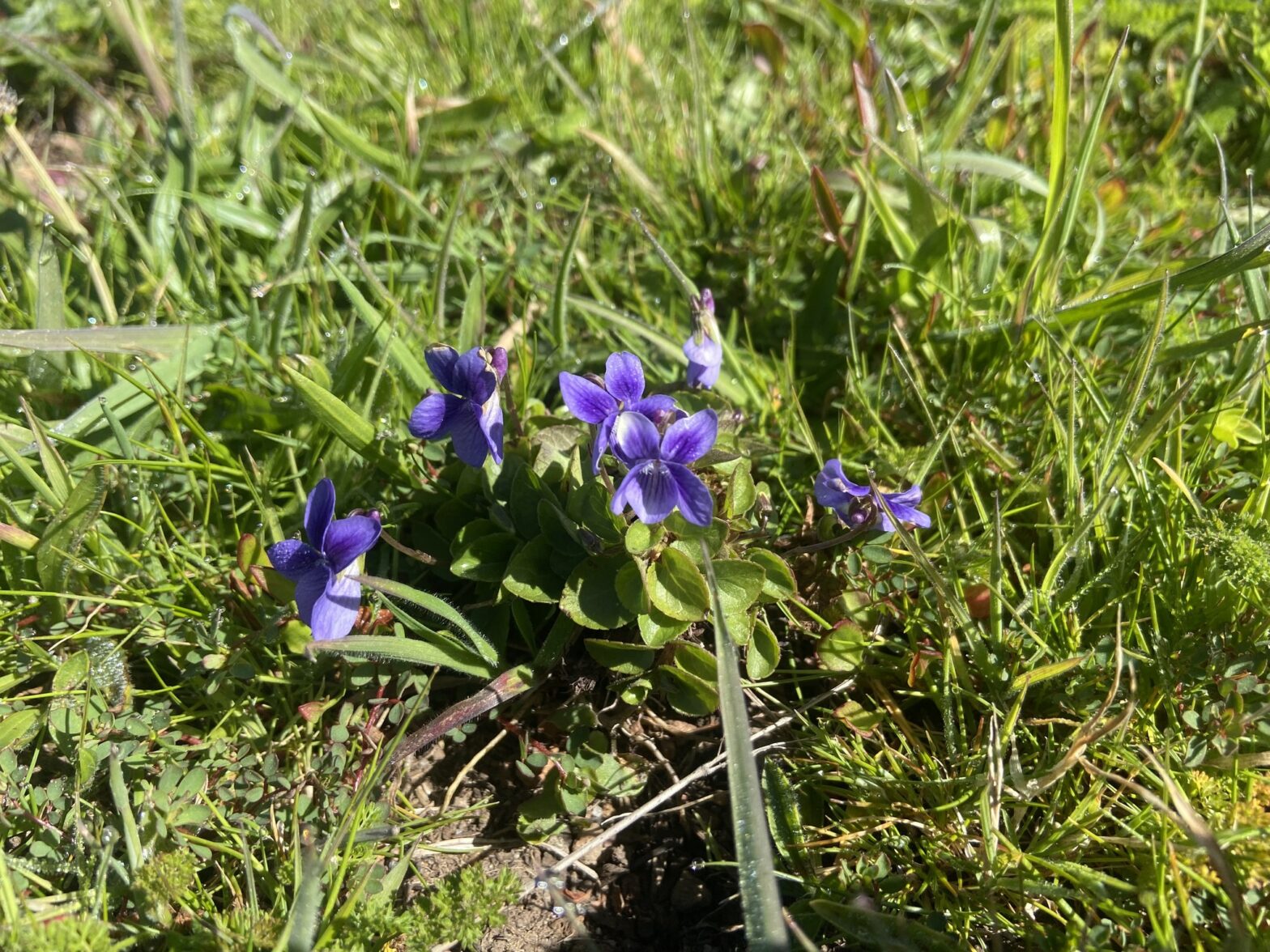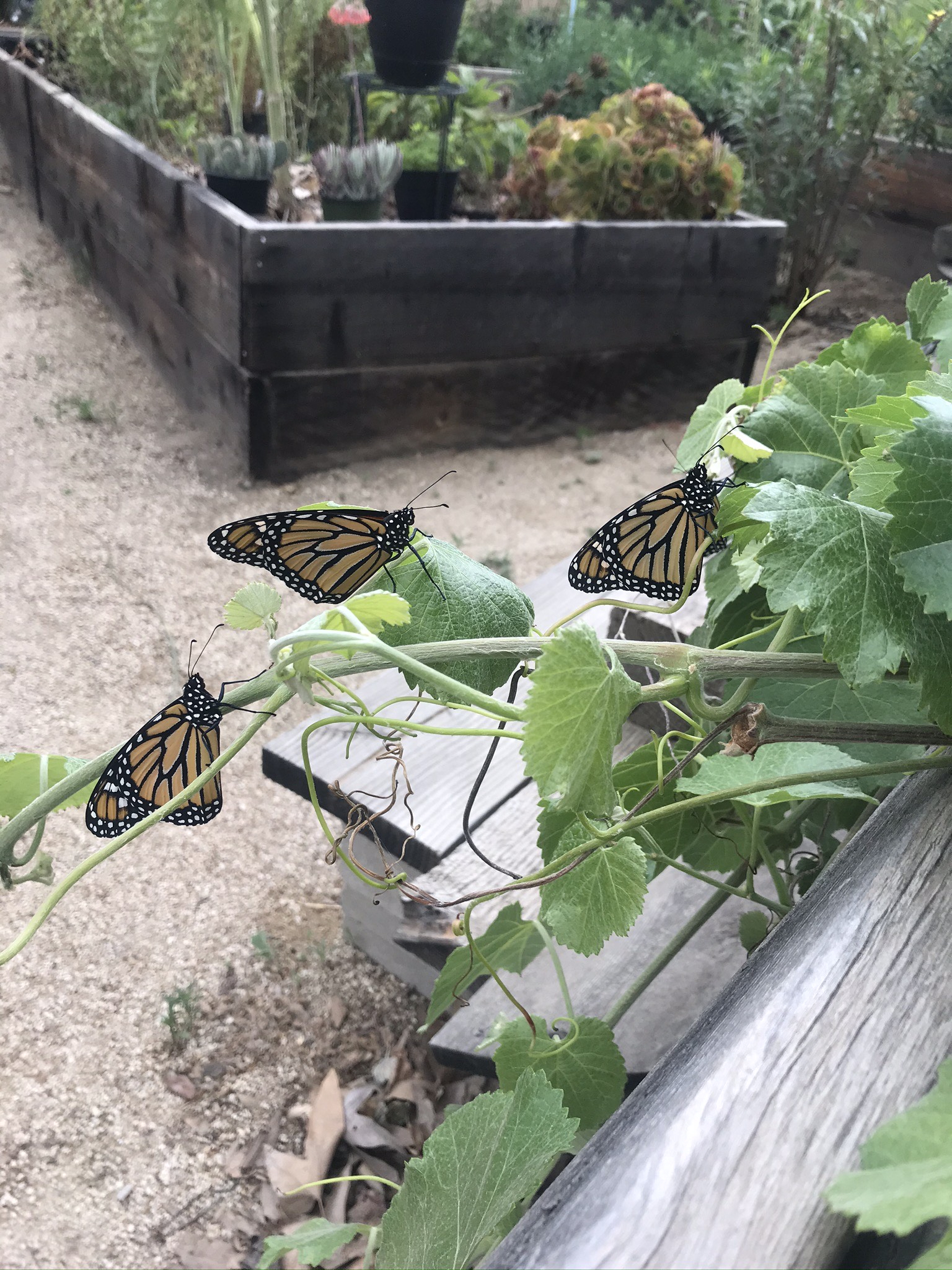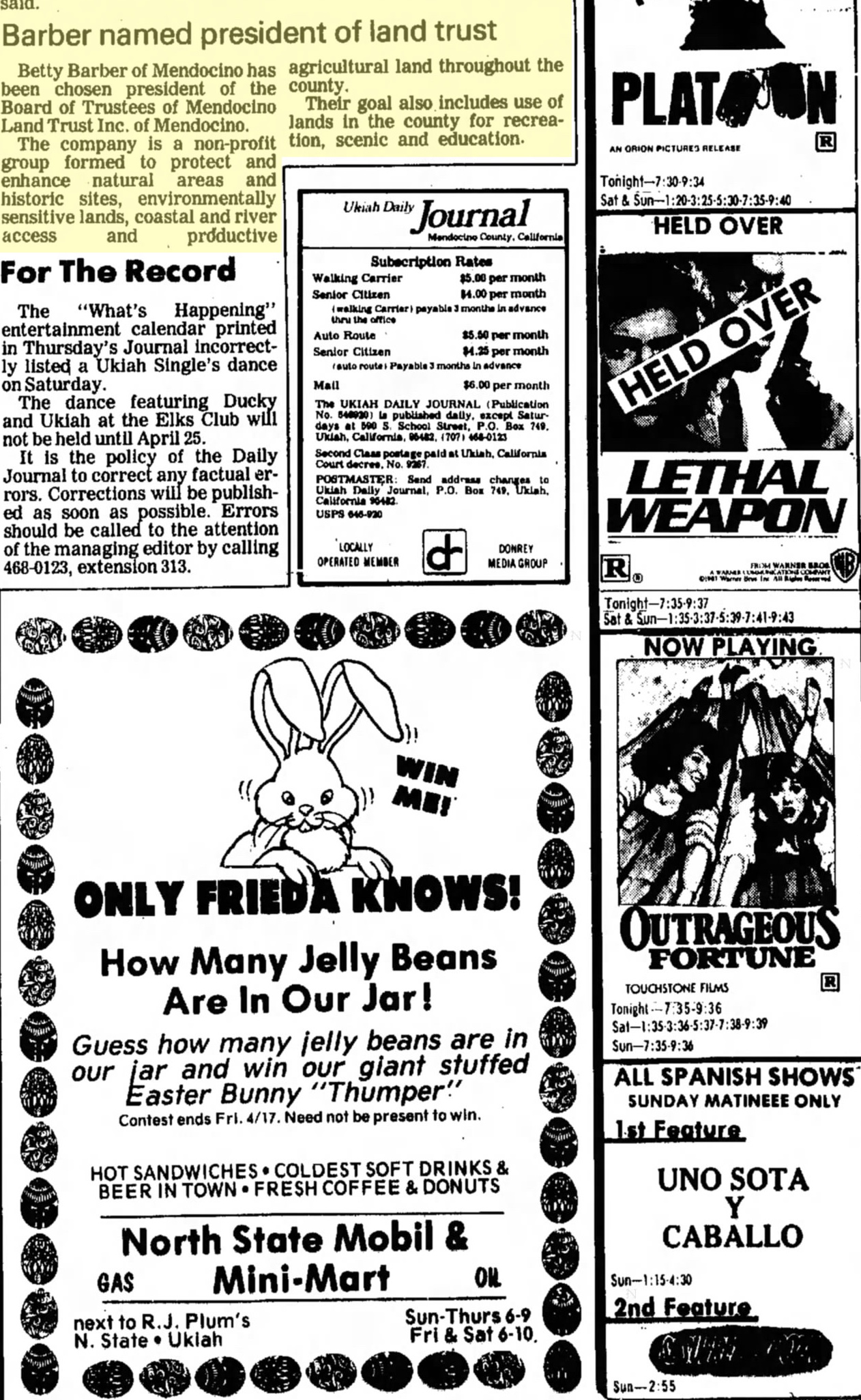In this issue: meet our three new Trustees, learn about two salmon habitat restoration projects in JDSF, and plan to join us at the Mendocino Film Festival for our sponsored film, Wilding.
Winter 2025 News
In this issue: Great Redwood Trail news, Butterfly habitat, and a big Land Protection win on the North Coast. Check out our listings for 2025 upcoming events including the Wild & Scenic Film Festival coming up this weekend in Willits and Ukiah, Outdoor Social Club outings, (birding! wildflowers!) and the Noyo Headlands Race in August.
Bell Point Acquisition
Mendocino Land Trust is thrilled to announce that we are in contract to purchase a 157-acre coastal blufftop parcel known as Bell Point, located just south of Westport on the northern Mendocino Coast. Protecting this remarkable property is made possible with a $2.505 million grant from the State Coastal Conservancy. The California Council of Land Trusts awarded MLT an additional $95,000 Project Advancement Grant to support the project, which will also include planning a new portion of the California Coastal Trail as well as return of the property to Kai Poma, a nonprofit representing three local Native American tribes, who will soon also own nearby Blues Beach to the south. The project has the strong support of the Westport Village Society and MLT’s project partner, Kai Poma, as well as our local Representatives.
Bell Point project lead, MLT Director of Land Protection Emily Griffen, reports: “The property will be protected forever, opened to public access for the first time, and returned to local Native American tribes for long-term ownership and management.”
Bell Point sits by the southern edge of the Village of Westport. It consists of approximately 50 acres of open coastal headlands, coastal meadows, riparian wetland, and a bishop pine forest. Across Highway 1, an additional 100 acres of mixed conifer redwood-fir forest, meadowland, and ocean view ridgelines will also be preserved. The headlands offer a jaw-dropping 180º degree view of our rocky and dramatic Mendocino coastline.
Mendocino Land Trust is honored to work with Kai Poma to facilitate the return of this land to three Native American tribes — Sherwood Valley Pomo Band of Indians, Round Valley Indian Tribes, and the Coyote Valley Band of Pomo Indians — as a vital step towards restoration and reparation.
Summer Newsletter
May MLT Monthly
Meet The Elk
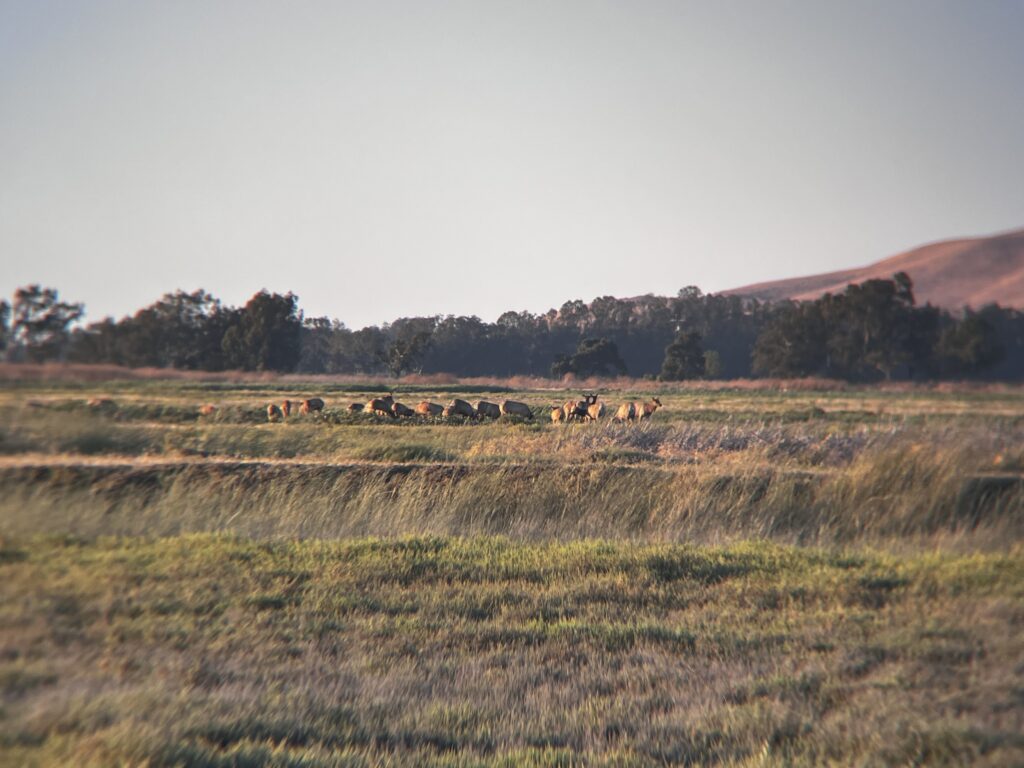
By Mike Heine
Elk (Cervus canadensis) are the second largest species of deer in the world and native to a large part of the northern hemisphere. In coastal Northern California there are two native subspecies – the Roosevelt elk, which is the largest, and the endemic tule elk, the smallest.
Much like cows, elk are grazers with four-chambered stomachs. They eat about 20 pounds a day, mainly chowing down on grasses and tree leaf buds. They are a very social animal, forming groups in the several hundreds regularly during the summer mating season. For the rest of the year, elk usually separate into male and female herds and travel in smaller numbers, although old bull elks tend to enjoy their solitude and live alone until the summertime.
Elk have one of the most distinct calls in the mammal world, called a bugle. It’s basically the elk version of yodeling – a high-pitched and shrill call the males make to advertise how strong they are over long distances. During the mating season, known as the rut, males will stand off against each other to compete for the females, using their massive antlers against each other if necessary. Once mated, the females will give birth the following summer. By six months old the calves are the size of an adult white-tailed deer!
The elk population has waxed and waned. At one time, elk were nearly extirpated in California due to overhunting, competition with cattle, and habitat destruction. The tule elk once numbered in the hundreds of thousands throughout the marshes of the Central Valley. Yet in the 1800s they were thought to be extinct until a pair was discovered in the southern Central Valley in the 1870s. Over time, through the impassioned work of conservationists, tule elk have staged a comeback until they number almost 6,000 today.
Roosevelt elk saw the same precipitous declines with just a few hundred left by the turn of the last century. But their status has also changed for the better with hundreds of thousands now reclaiming their range from California all the way to British Columbia.
In the Mendocino County area, you can seek out elk on several trails. According to the Microsoft Copilot, your best chances are at:
- Lake Pillsbury and Eel River lands: These areas are known for their elk populations. There are several trails in these areas where you might spot elk.
- Lost Coast Trail (Sinkyone Wilderness State Park): This rugged, remote 22-mile trail offers breathtaking ocean views, dense forests, and the chance to spot abundant wildlife, including elk.
- Usal Road: The trail accessed from the south by taking Usal Road, off of Hwy 1, is known for its old-growth Douglas fir, majestic Roosevelt elk, and the tiny rare “secret pocket moss”.
Nat’l Wildflower Week! May 1-7
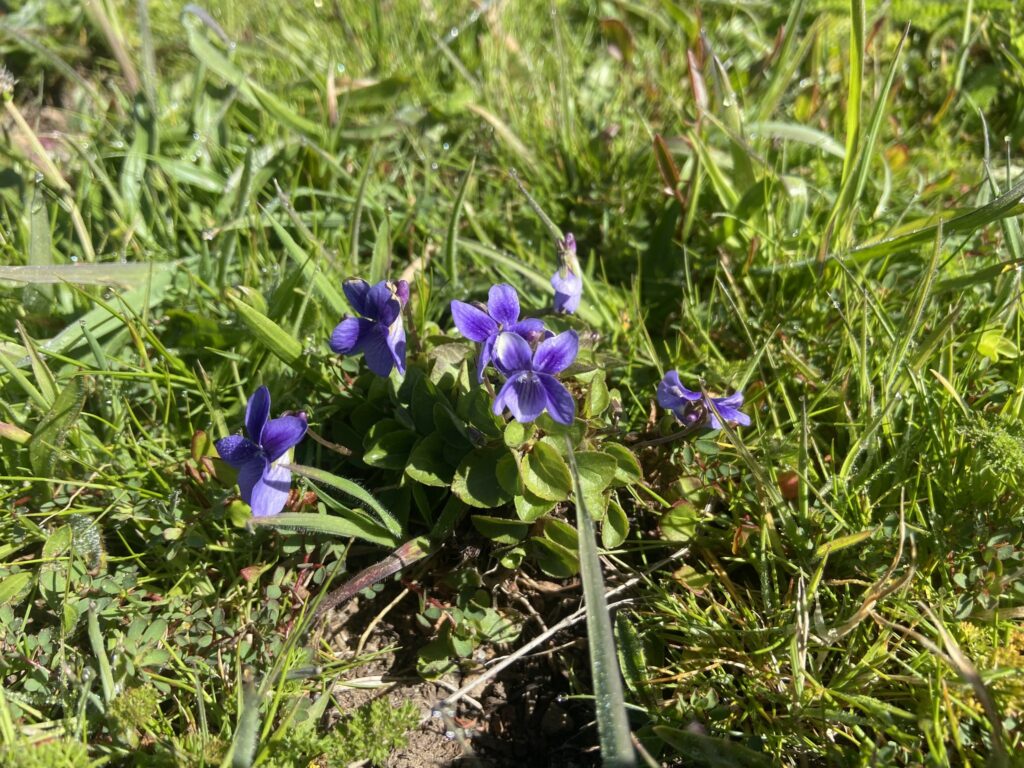
MLT celebrates National Wildflower Week by sharing information and cool links about these beautiful and important plants. Not only are wildflowers a source of visual delight, but they also play a vital role in the lifecycle of many insects and the other creatures that depend on them. Check out the links below for some fun facts and stunning pictures!
- MLT’s Pollinator Grant
- VisitMendocino.com’s “Wild for Wildflowers” page
- Ladybird Johnson Wildflower Center at the University of Texas, Austin
- North of Ordinary’s list of wildflowers
- National Forest Service – 20 Ways to observe National Wildflower Week
- Beautiful Backyard Landscaping Ideas – Ecosystem Gardening
- USDA – Celebrating Wildflowers
- National Parks Service
Wildlife Wednesdays – Monarchs: A Comeback Story!
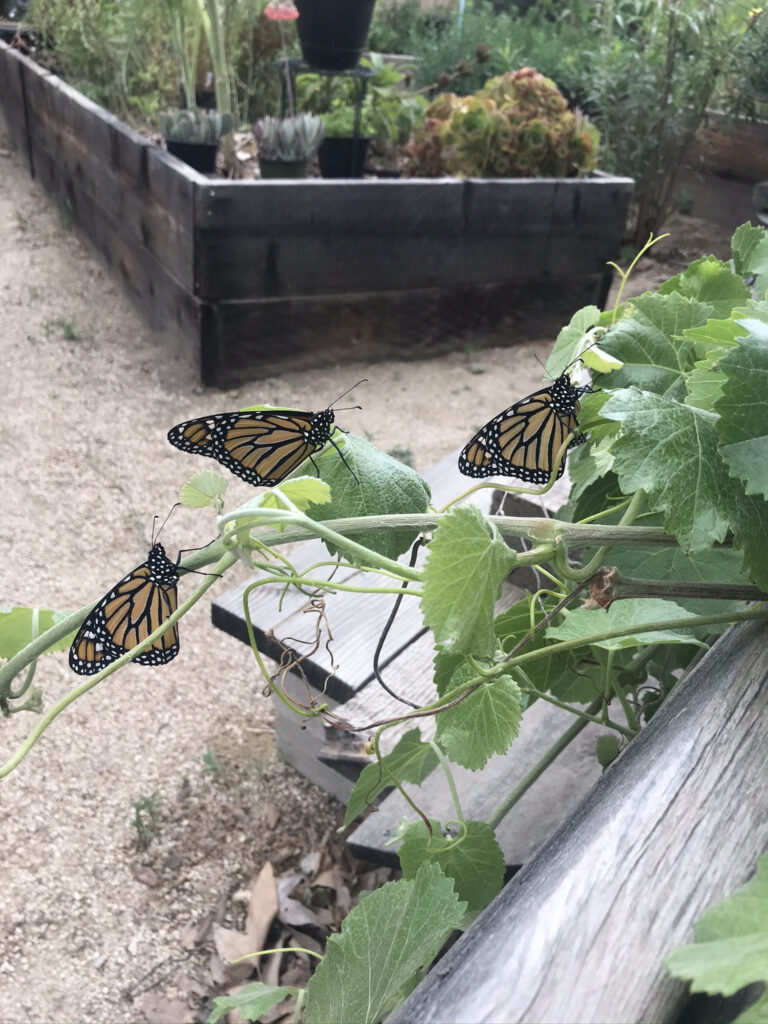
by Mike Heine
The western monarchs (Danaus plexippus plexippus) are currently dispersing inland, seeking out milkweed to lay eggs and complete another generation cycle on their endless migration.
While not genetically distinct from the monarchs that inhabit east of the Rocky Mountains (a natural if somewhat permeable population boundary), western monarchs are unique in that instead of overwintering in the upland forests of central Mexico, they do it right here in California. Each year, one generation of monarchs will hunker down in groves of trees within two miles of the ocean to wait out the worst of the winter until spring when they can set sail once again. They prefer cypresses, pines, and even the invasive eucalyptus tree to shield them from the winds and rains, and the humid ocean air provides a buffer against freezing temperatures and desiccation. These congregations are amazing displays where it seems that the very leaves themselves are replaced by butterflies.
Once this cohort sets off, a three- to four-generational process begins anew. The monarchs fly inland seeking their only host plant, milkweed, to lay their eggs, and then they die. While the larvae only eat milkweeds, adults can feast on a variety of nectar plants to keep their strength up for the journey. This new generation will feed on the milkweed until it’s time for them to set off, repeating the cycle until the autumn generation goes back to the coast to find those groves once again.
In recent years, we have nearly lost this incredible species due to a combination of habitat loss, pesticides, and climate change. Where once the skies were clouded with millions of monarchs in the 1980s, a low of 2,000 adults were recorded in 2020. Fortunately, in 2022 they rebounded to over 300,000, a 22-year high! The current total for 2024 stands at about 233,000, lower than the historic populations but cause for celebration and action to preserve these incredible butterflies for future generations.
MLT Salutes Asian-Pacific Americans and Their Environmental Stewardship!

May is Asian-Pacific American month, and MLT salutes the stewardship done by many dedicated activists.
An extensive study by the Asian Pacific Environmental Network, revealed that 83% of Asian American voters in California describe themselves as environmentalists. They believe in protecting our air, land, and water while creating sustainable jobs. Let’s amplify these voices and recognize their impact!
Let’s celebrate the rich tapestry of AAPI identities and their vital role in safeguarding our planet. Tag an AAPI environmental champion you admire!
Jack Chin: A fifth-generation Toisanese American, Jack’s childhood was spent exploring a Chinese laundry in Queens, New York. His connection to nature blossomed during weekends when his father took him fishing outside the city. Jack’s journey led him to work with the Student Conservation Association, where he found his passion for protecting our planet’s green spaces.
Agnes Vianzon: A queer Filipinx, Agnes bridges the gap between her heritage and environmental advocacy. She transformed her role in writing environmental impact reports into a force for positive change. Agnes now leads the Eastern Sierra Conservation Corps, empowering women, nonbinary, queer, and BIPOC folx through transformative conservation experiences.
Allison Chin: A retired scientist and self-proclaimed “elder,” Allison’s love for public lands was cultivated during childhood camping trips with her extended family. Her dedication to environmental protection led her to volunteer with the Sierra Club. Allison’s legacy inspires generations to cherish and safeguard our natural treasures.
Larry Itliong: In 1965, Filipino-American labor activist Larry Itliong organized a strike of over 2,000 Filipino-American farmworkers. Their fight for better wages and working conditions included advocating for regulations on pesticides harmful to both workers’ health and the environment. Larry’s resilience paved the way for positive change.
The above information was gathered and complied by Microsoft CoPilot AI engine and uses articles from the Sierra Club’s website. You can read the full articles here.
#AsianPacificAmericanHeritageMonth #EnvironmentalStewards #ConservationHeroes #AAPIVoices #mendocinolandtrust
Flashback Friday – Betty Barber Named President – April 1987
From the Ukiah Daily Journal, used with permission, all rights retained by UDJ.
